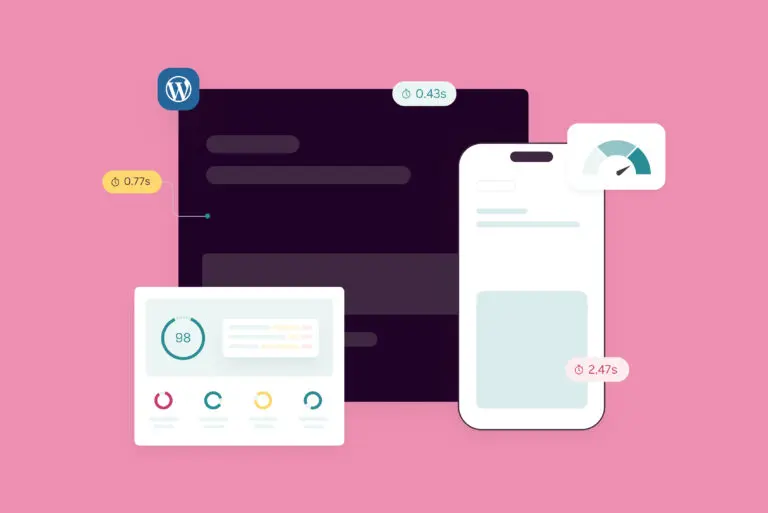WordPress
Safeguard Your WordPress Site with Complete Backup Solutions
Navigating the digital landscape of your WordPress website can be both exciting and challenging. It’s your space to share ideas, grow your business, or tell your unique story. However, the digital world is unpredictable, and the security of your website is paramount. That’s where understanding the art of a robust WordPress backup becomes essential.

At HeyReliable.com, we understand the significance of keeping your digital presence safe. We’re here to guide you through the essentials of WordPress website backups. No confusing jargon or overwhelming technical talk – just straightforward, helpful advice. We pride ourselves on creating custom-coded websites from scratch, steering clear of converter tools or plugins, ensuring each site we craft stands out in both performance and security.
Backing up your website is like having a safety net for your digital content, and we believe everyone deserves to have that peace of mind. Whether you’re managing a personal blog, a bustling online store, or providing services to clients as an agency or freelancer, knowing how to secure your site’s data is crucial. Let’s dive into the ins and outs of WordPress backups, ensuring your online presence is protected and resilient, no matter what comes your way.
Understanding WordPress Backups
Keeping your WordPress site secure and backed up becomes increasingly important. But what exactly does it mean to back up a WordPress website? In simple terms, it’s about creating a copy of your site that you can restore in case of any mishap, be it a technical glitch, a security breach, or a simple user error.
Does WordPress Have Built-in Backup?
A common question we hear at HeyReliable.com is whether WordPress offers a built-in backup solution. The short answer is no, WordPress itself doesn’t come with a native backup feature. This is where the expertise of a developer or the use of third-party solutions becomes invaluable. But worry not, as there are many reliable methods to secure your site, which we’ll delve into in this guide.
The Importance of Regular Backups
You might wonder, how often should you back up your WordPress site? The frequency really depends on how often your site’s content changes. For dynamic sites with daily updates, a daily backup might be necessary. For others, a weekly or monthly schedule could suffice. The key is regularity to ensure that, no matter what, your latest content is safe.
What Needs to Be Backed Up?
Understanding what elements of your WordPress site need backing up is crucial. Essentially, there are two main components:
- Database: This contains your posts, comments, and the settings of your site.
- Files: This includes themes, plugins, media, and the core WordPress files.
Backing up both components ensures that your site can be restored to its full functionality and appearance in the event of data loss.
Why Backups are a Lifesaver
Imagine waking up one day to find your website compromised or accidentally tampered with. Without a backup, restoring your site to its former glory can be a daunting, if not impossible task. Regular backups act as a safety net, giving you peace of mind and the ability to react quickly and efficiently to any such situations.
In our next sections, we’ll guide you through the practical steps of creating backups manually and explore various tools that can make this process easier and more reliable. Stay tuned as we walk you through these essential steps to safeguard your WordPress site, ensuring that your online journey with HeyReliable.com is always secure and seamless.
Manual Backups: A Secure and Personalized Approach
Creating backups manually might seem daunting, but it’s a process that gives you complete control over your WordPress site’s safety. At HeyReliable.com, we advocate for this hands-on approach, especially since we specialize in crafting websites from the ground up. Let’s break down how you can manually back up your WordPress site.
Step 1: Backing Up the Database
Your WordPress database is the heart of your site, storing your posts, comments, and crucial settings. To back it up:
- Access your hosting control panel.
- Locate the database section and select your WordPress database.
- Use the export function to save a copy of the database to your computer.
It’s a straightforward process that ensures your site’s most vital information is securely stored.
Step 2: Backing Up Website Files
The next step involves backing up your website files, including themes, plugins, and media. Here’s how:
- Connect to your site’s server using an FTP client.
- Navigate to the root directory of your WordPress installation.
- Download all the files to a secure location on your computer.
This step secures the visual and functional elements of your site, preserving its unique design and features.
Why Choose Manual Backups?
Opting for manual backups puts you in the driver’s seat. You get to decide when and how often to back up, giving you tailored security based on your site’s specific needs. This method is especially beneficial for websites with custom coding and unique configurations, like the ones we develop at HeyReliable.com.
Keeping Your Backups Safe
Once you’ve backed up your database and files, store them in a secure location. Consider using external hard drives or cloud storage solutions for added security. Regularly updating your backups and keeping multiple versions can be a lifesaver in various scenarios, from minor glitches to major incidents.
Manual backups are a testament to your commitment to your website’s integrity. As we move forward, we’ll explore more automated solutions and tools that can complement this approach, ensuring your WordPress site is always protected, just like the bespoke creations we pride ourselves on at HeyReliable.com.
Backup Solutions: Navigating Free and Premium Options
While manual backups are great for full control, various automated backup solutions can streamline the process, saving time and effort. In this digital age, having a reliable backup strategy is non-negotiable, whether you opt for free tools or invest in premium services. Let’s explore the options available for WordPress backups.
Free Backup Solutions: A Good Starting Point
Free backup solutions can be a great starting point, especially for new or small websites. Many plugins available in the WordPress repository can automate the backup process. These solutions typically offer basic features like scheduled backups and storage on your server or cloud services like Dropbox or Google Drive. However, they might have limitations in terms of storage space, frequency of backups, and customer support.
Premium Backup Services: Enhanced Security and Features
For websites with heavier traffic or more complex structures, premium backup services are worth considering. These solutions often provide more robust features such as real-time backups, enhanced security, dedicated cloud storage, and priority support. Premium services ensure that your backups are handled with extra care and precision, giving you peace of mind and more time to focus on your business.
HeyReliable.com’s Approach to Backups
At HeyReliable.com, we understand the unique needs of each WordPress site we build. That’s why we recommend backup solutions that align with your site’s specific requirements. Whether you need a simple backup plugin or a comprehensive service, we guide you in selecting the best option. Our goal is to ensure your site remains secure and functional, reflecting the high standards of our handcrafted, plugin-free development process.
Keeping Backup Costs in Check
Cost is a key factor when deciding between free and premium backup solutions. While free options can be attractive for their no-cost appeal, they may not offer comprehensive coverage. On the other hand, premium services, though requiring an investment, can offer extensive features and peace of mind. It’s important to weigh the pros and cons and choose a solution that provides the right balance of functionality and affordability for your website.
In the upcoming section, we’ll delve into the specifics of cloud-based backups, detailing how you can secure your WordPress site in the cloud. Whether you’re a seasoned webmaster or new to the digital realm, HeyReliable.com is here to support you every step of the way, ensuring your site’s backups are as reliable and robust as our coding.

Backing Up Your WordPress Site to the Cloud
Cloud-based backups offer a secure and flexible way to protect your WordPress site. By storing your backups offsite, you safeguard your data from local hardware failures and other risks. Let’s walk through how you can efficiently back up your WordPress site to the cloud.
Choosing the Right Cloud Backup Service
The first step is selecting a cloud backup service. There are numerous options available, each with its own set of features. Look for services that offer WordPress compatibility, ample storage, strong security measures, and ease of use. Some popular choices include Google Drive, Dropbox, and Amazon S3. Depending on your needs, you might also consider WordPress-specific services that offer additional features tailored to your site.
Preparing Your Site for Cloud Backup
Before initiating a cloud backup, ensure your site is ready:
- Update WordPress, themes, and plugins to their latest versions.
- Remove any unnecessary files or outdated backups from your server to avoid cluttering your cloud storage.
- Check your website for any issues that might affect the backup process, such as broken links or outdated content.
Executing the Backup
With your site prepped, it’s time to execute the backup:
- Install a backup plugin compatible with your chosen cloud service.
- Configure the plugin settings, specifying what parts of your site to back up (database, files, or both) and set a backup schedule.
- Authenticate the plugin with your cloud service to ensure secure data transfer.
- Run a test backup to verify that everything is working correctly.
Managing and Monitoring Cloud Backups
Once your backup system is in place, regular monitoring and management are crucial. Make sure your backups are running as scheduled and verify their integrity periodically. Most backup services provide notifications and logs, making it easier to stay informed about your backup status.
Restoring from Cloud Backups
In the event that you need to restore your site, the process should be straightforward. Most backup plugins offer a restore function that lets you revert your site to a previous state using the stored cloud backups. It’s always a good practice to perform a test restore periodically to ensure that your backups are functioning correctly.
Cloud backups are an integral part of a comprehensive WordPress backup strategy, offering convenience and reliability. At HeyReliable.com, we emphasize the importance of robust backup solutions. Whether you’re a solo entrepreneur or managing a site for a larger organization, having a reliable cloud backup ensures that your website’s data is always safe and recoverable.
The Restoration Process: Bringing Your Site Back to Life
Even with the best precautions, sometimes things go wrong. Knowing how to restore your WordPress site from a backup is just as crucial as having the backup itself. Whether it’s due to a technical mishap, a security breach, or an update gone awry, restoring your site promptly and efficiently is key. Here’s how you can confidently navigate the restoration process.
Preparing for Restoration
Before diving into the restoration process, it’s important to assess the situation:
- Identify the Cause: Understanding what led to the need for restoration can help prevent similar issues in the future.
- Choose the Right Backup: Select the most recent and relevant backup for restoration, considering the data and changes made since the last backup.
Step-by-Step Restoration
Restoring your WordPress site involves several key steps:
- Access Your Backup: Whether it’s stored in the cloud, on an external drive, or through a backup service, ensure you have access to your backup files.
- Restoring the Database: Import your backed-up database using tools provided by your hosting service or through phpMyAdmin.
- Restoring Files: Re-upload your WordPress files, themes, and plugins using an FTP client or the restore feature in your backup plugin.
Testing After Restoration
Once your site is restored, it’s vital to thoroughly test it:
- Check Functionality: Ensure all pages load correctly and that features like forms, login, and search work as expected.
- Verify Content: Make sure all your content is present and displayed correctly.
- Look for Errors: Keep an eye out for any error messages or unusual site behavior.
Post-Restoration Best Practices
After a successful restoration, consider the following:
- Backup Schedule: Re-evaluate your backup frequency and methods to ensure they align with your current site’s needs.
- Security Measures: Implement or strengthen security measures to safeguard against future issues.
- Update Documentation: Keep a record of the restoration process and any lessons learned to streamline any future restorations.
At HeyReliable.com, we understand the importance of not just creating a resilient website but also ensuring its quick recovery when needed. Our approach to backups and restoration is designed to give you peace of mind, knowing that your website can withstand and recover from the unexpected.
Special Considerations for Agencies and Freelancers
As an agency or freelancer, your WordPress website is more than just an online presence—it’s a portfolio, a point of contact, and a crucial part of your business. That’s why it’s essential to have a backup and restoration plan that meets your unique needs. Here at HeyReliable.com, we recognize the specific challenges and requirements you face and are dedicated to offering solutions that cater to your distinct scenarios.
Tailoring Backup Strategies
Agencies and freelancers often manage multiple websites, each with its own set of complexities. A one-size-fits-all approach to backups won’t do. Instead, consider the following:
- Custom Backup Solutions: Depending on the site’s complexity, traffic, and update frequency, your backup strategy may vary. Some sites might need daily backups, while others may suffice with weekly or monthly.
- Centralized Management: Utilize tools that allow for the management of multiple backups from a single dashboard, streamlining the process and saving time.
Restoration Readiness
In your line of work, time is of the essence. A quick and efficient restoration process can be a lifesaver in critical situations. Here’s how to stay prepared:
- Regular Testing: Periodically test the restoration process for each website you manage to ensure backups are functioning as expected.
- Client Communication: Keep your clients informed about the backup and restoration processes. This transparency builds trust and sets clear expectations.
Balancing Cost and Efficiency
Finding the right balance between cost-effective and efficient backup solutions is key, especially when managing multiple clients. Consider these points:
- Scalable Solutions: Look for backup services that offer scalability, allowing you to adjust as your client base grows or changes.
- Cost-Benefit Analysis: Regularly assess the cost of your backup solutions against the benefits they provide. Investing in reliable backup solutions can save time and resources in the long run.
Building a Resilient Digital Portfolio
For agencies and freelancers, a resilient digital portfolio is a testament to your expertise and reliability. Regular backups and a solid restoration plan not only protect your work but also showcase your commitment to best practices and professionalism.
HeyReliable.com is here to partner with you. We offer the expertise and support to develop and maintain backup strategies that align with the high standards of your projects. Together, we can ensure that your digital portfolio remains robust, secure, and always ready to impress.
Conclusion: Ensuring Your WordPress Site’s Resilience
WordPress backups and restoration might seem complex, but with the right knowledge and tools, it becomes a manageable and crucial part of maintaining your website’s health and security. From understanding the need for regular backups to mastering the restoration process, each step you take is a stride towards ensuring your site’s resilience.
At HeyReliable.com, we’re not just about building websites; we’re about creating lasting digital solutions that stand the test of time. Our approach is rooted in custom-coding from scratch, ensuring each website we craft is as unique and dependable as the businesses and individuals it represents.
Remember, your website is more than just a set of pages; it’s a digital embodiment of your vision and hard work. Protecting it with regular backups is not just a technical necessity; it’s an investment in your peace of mind. Whether you’re an individual blogger, a bustling e-commerce site, or an agency handling multiple clients, having a solid backup and restoration plan is indispensable.
If you’re ready to take the next step in securing your WordPress site, we at HeyReliable.com are here to help. Our team of experts is dedicated to providing personalized solutions that align with your specific needs. From manual backups to cloud-based solutions, we guide you through choosing and implementing the most effective backup strategy for your site.
Don’t wait for the unexpected to happen. Secure your WordPress site today with HeyReliable.com. Visit our website, explore our services, and let us help you build a digital foundation that’s as reliable as you are. Your peace of mind is just a click away.




